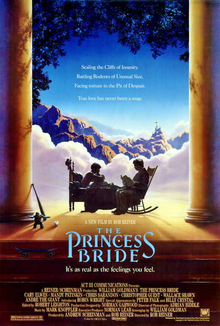NOTE: I'm sorry that I haven't written an article in about a year. A lot has happened since I wrote about the 90s indie scene in November 2023. Earlier this year, I wrote a play for a repertory theater company. It was picked up, it was a success, and I made a lot of money off it, but I neglected my abilities to write insightful blog posts about the movies, but now I'm back! This time, I'm writing about movie books and what better way to start than with Roger Ebert!
Roger Ebert was widely regarded as one of, if not, the most influential film critic who ever lived. Primarily known for his televised debates with his partner Gene Siskel, he helped to make film criticism more accessible for a wider audience. But during his time on television, and way before the Internet, he transferred his in depth newspaper reviews into a series of video guide books, encouraging his audience to find high quality movies on home video. We'll address how these books have a place in home video history and what made Roger's reviews accessible to the general public.
A Brief History of Home Video
In the late 70s and early 80s, the home video revolution has started to take shape. Before that, if you missed a movie in it's original theatrical run, you'll never be able to see it unless if it opens in your local revival theater, or if it airs on broadcast TV. But then home video came along, giving you the opportunity to not only own a film, but to watch it over and over again.
Most people were initially skeptical of home video, as they feared that it might replace the theatrical experience (similar to the current streaming revolution), but that didn't happen, as home video has seemed to generate a new generation of movie fans.
As home video grew into popularity, many film critics and experts have written video guide books, and Roger Ebert was one of them.
The History of Roger Ebert's Movie Home/Video Companion
Since 1967, Roger Ebert became one of the most prominent film critics and one of the most trusted tastemakers who ever lived. Known for his wit, intelligence, and genuine passion for movies, his reviews have touched the hearts of the newer generation of both regular moviegoers and hardcore movie lovers. With his influence greatly increasing on television, he began writing books.
In 1984, Roger wrote a book compiling his interviews called A Kiss Is Still A Kiss. It contains essays and interviews with directors and stars like Groucho Marx, Lee Marvin, Martin Scorsese, Sylvester Stallone, and dozens more. The book was a success and led to a publishing partnership with Andrews McMeel Publishing. According to editor and colleague Donna Martin, she proposed Ebert to make a compilation of his reviews of movies available on home video.
The first volume was published in October 1985. Both due to his initial reluctance to embrace home video and his observation that most video stores have a recency bias towards the new releases, the book chronicles his reviews written between 1980 to 1985, but the book became successful enough that it became an annual series, with updated reviews, essays, and interviews.
By 1990, the books have sold 65,000 and 75,000 copies in the first five years, making them best-sellers. As the years went on, the books have gotten bigger and bigger to the point that there's barely enough room for newer reviews and the format needed to change. The last volume of the Companion series was published in 1997 and the format was replaced by "Roger Ebert Movie Yearbook" the following year, this time covering two years of movies per volume. The last Movie Yearbook was published in 2012.
With his influence in the film community greatly increasing over time, Roger Ebert had become the go-to film critic up until his death on April 4, 2013.
What Makes It Stand Out From Other Video Guide Books?
Most video guides written during that time often provide short, surface level paragraphs. Roger’s reviews are his in-depth newspaper reviews from the Chicago Sun Times, and they’re his firsthand accounts to huge changes in Hollywood. There’s the New Hollywood period in the 70s, the advent of the summer blockbuster in the 80s, and the indie film explosion in the 90s, and he covered as many films as possible. More than just mainstream Hollywood films and box office hits, he's also covered foreign films, independent films, documentaries, cult films, animation, and restored classics.
In addition to his reviews, he has also written interviews and essays highlighting trend and issues within the film industry. He has written about why colorization of black and white films is inherently wrong, why Laserdiscs are better than VHS, how the MPAA rating system is flawed, why letterboxing widescreen movies on video is better than panning and scanning, and how the blockbuster mentality that was established by Star Wars was antithetical to the creative freedom and experimentation in the late 60s and early 70s.
But the primary takeaway from these books is that Roger is a genuine lover of cinema. It doesn't matter if you agree with his reviews or you don't, his enthusiasm for great movies really shines through in his reviews. This is why these books primarily focus more on his positive reviews, as it's his way to encourage his readers to seek out high quality movies and decide for themselves.
Conclusion
Roger Ebert’s Movie Home/Video Companion is a thoughtful, passionate series of books about the movies, and it further showcases how much of a passionate and intelligent critic he was. A true film critic for the people.



This was very interesting. Thank you for sharing. We've missed you.
ReplyDelete